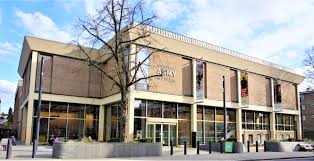A Journey Through the National Army Museum

Introduction
The National Army Museum, located in Chelsea, London, stands as a significant institution dedicated to preserving the rich history of the British Army. Established in 1960, it offers a comprehensive narrative of military history through its vast collections, exhibitions, and educational programmes. The museum serves not only as a historical archive, but also as a place of reflection on the sacrifices and achievements of British soldiers throughout the centuries. In light of recent events and ongoing discussions around military heritage, the importance of the National Army Museum is more pertinent than ever.
Recent Developments
In 2023, the National Army Museum launched a new exhibition titled “Courage and Conflict,” which explores personal stories of soldiers from diverse backgrounds. This initiative is part of the museum’s commitment to inclusivity and to highlighting the multi-faceted nature of the British Army. In addition, the museum has invested in digital technology, allowing virtual tours and online exhibitions to cater to a global audience, especially amidst the ongoing recovery from the COVID-19 pandemic.
Furthermore, the museum has been actively involved in local community engagement projects, including school visits and workshops aimed at educating the younger generation about military history. With over 2,000 objects on display, ranging from uniforms to weaponry, visitors gain insights into various aspects of army life and operations.
Significance for Visitors and the Community
The importance of the National Army Museum extends beyond its exhibitions; it serves as a platform for discourse on military history, ethics, and the role of the armed forces in the modern world. With various educational resources and public events, the museum fosters an environment where history and its implications can be thoughtfully examined by all ages.
Readers are encouraged to visit the National Army Museum not only to explore its collections but also to participate in the discussions it promotes. Such engagements can deepen one’s understanding of history and its effects on present-day society.
Conclusion
As we move further into the 21st century, the significance of institutions like the National Army Museum cannot be overstated. With ongoing initiatives to modernise and broaden its reach, the museum provides a vital space for reflection, understanding, and education on Britain’s military past. By bridging the gap between history and contemporary issues, it plays a crucial role in shaping our society’s perspective on the armed forces.









